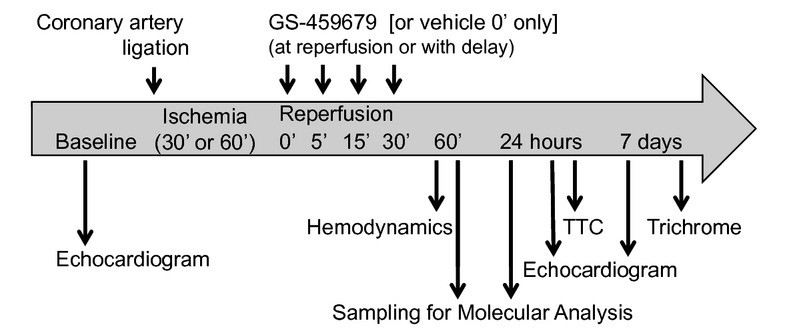Figure 1.

The figure shows the timeline of the study. Eight treatment groups of mice were used (total mice, N=120): (1) sham (surgery without ischemia and reperfusion) at 60 min, 24 h, or 7 d (n=4 per each time point); (2) vehicle ischemia and reperfusion (0.1 mL vehicle solution at time of reperfusion) for 60 min, for 24 h for TTC and molecular analysis, or for 7 d (n=6 per each time point); (3) ASK1 inhibitor, GS-459679, single injection at 24 h for TTC (10 mg/kg in 0.1 mL vehicle solution; n=6); (4) GS-459679 single injection (30 mg/kg in 0.1 mL vehicle solution) at 60 min, at 24 h for TTC and molecular analysis, or at 7 d (n=6 per each time point); (5) GS-459679 30 mg/kg or vehicle BID for 7 d (n=6 per treatment arm); (6) delayed administration of GS-459679 30 mg/kg at 5, 15, and 30 min after reperfusion (n=6 per treatment arm); (7) GS-459679 30 mg/kg and vehicle single injection given at reperfusion after 60 min of ischemia (n=6 per treatment arm); and (8) permanent ligation (no reperfusion) treated with GS-459679 30 mg/kg or vehicle solution BID for 7 d (n=6 per treatment arm). TTC indicates triphenyl tetrazolium chloride staining for infarct size; BID, bis in die, from the Latin for twice daily.
